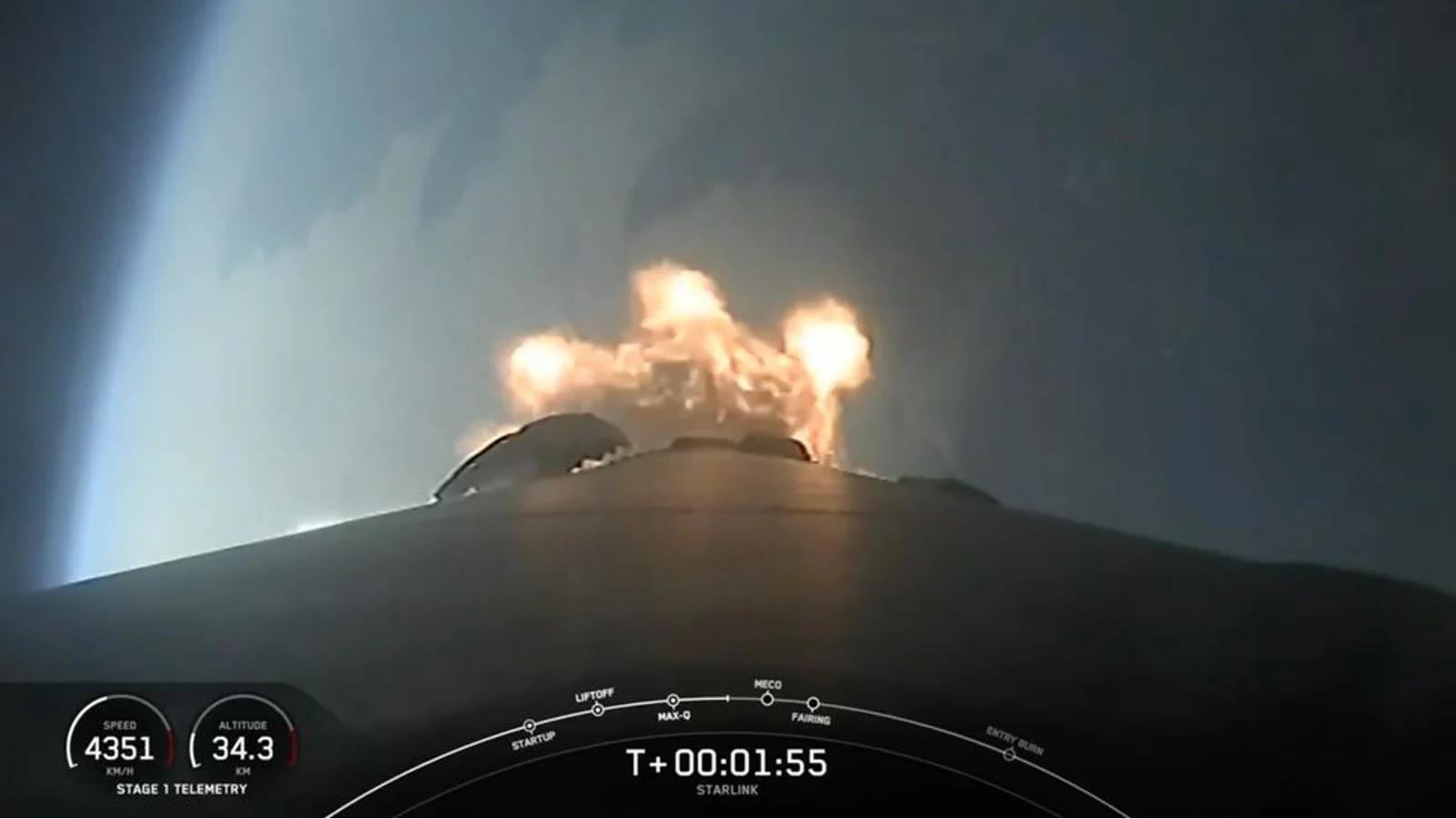20 artificial satellites fall from the sky due to the SpaceX rocket disaster, and investigations begin

Last week, SpaceX's rocket launch failed, and 20 Starlink satellites were released early. Currently, investigations by experts are underway, and until the investigation is completed, rockets that have failed to launch will be on standby on the ground.
On 7/11, SpaceX launched a Falcon 9 rocket from Vandenberg Space Force Station in California at 10:35 p.m. (US Eastern Time), 1 day later than originally scheduled. The first stage of the rocket was separated from the second stage carrying the satellite and landed on a drone ship over the Pacific Ocean. However, the second stage failed to burn for the second time due to a liquid oxygen leak, and it was left behind in low Earth orbit. (It is currently unclear whether liquid oxygen leaks are the cause of the launch delay).
The second stage of the rocket was still capable of releasing payloads. However, the satellite fell into an elliptical orbit orbiting the Earth, and the minimum altitude was 84 miles (135 km), which is about half of the height normally operated. The representative of SpaceX stated in a statement on 7/11 that at this altitude, the speed of the satellite decreased due to atmospheric resistance, and it began falling to Earth about 5 km every time it went around the orbit.
“At this level of drag, the maximum thrust we have available is unlikely to be sufficient to successfully raise the satellite. “Therefore, the satellite will re-enter the Earth's atmosphere and completely disappear.”
Space News reported that SpaceX controlled most of the satellites and ordered combustion with maximum thrust known as “Warp 9” as a final attempt to restore altitude. But it wasn't enough to save the satellite.
After that, SpaceWeather.com reported that observations by Harvard University astrophysicist Jonathan McDowell confirmed that all 20 satellites had a violent death on 7/12.
The representative of SpaceX wrote that the spacecraft that re-entered “does not threaten other satellites in orbit or public safety.” According to SpaceWeather.com, there are no reports that the spacecraft has reached the surface so far.
This was the Falcon 9 launch failure since 2016, and it was the biggest single loss of Starlink satellites since 2022/2, when 40 satellites were knocked down from the sky by a geomagnetic storm immediately after the satellite was put into Earth orbit.
According to reports from LiveScience's sister site Space.com, SpaceX is currently investigating what happened under the supervision of the US Federal Aviation Administration (FAA). Until this investigation is completed, SpaceX will not be able to launch Falcon 9 rockets in the future.
Disclaimer: Community is offered by Moomoo Technologies Inc. and is for educational purposes only.
Read more
Comment
Sign in to post a comment

FANGおじさん : It's going to have an impact, right?
乱空 OP FANGおじさん : SpaceX itself is an unlisted stock, so if there's a possibility, it's related, but since it happened last week (11th), I feel like it's already happening if it has an impact...![undefined [undefined]](https://static.moomoo.com/nnq/emoji/static/image/default/default-black.png?imageMogr2/thumbnail/36x36)
So, personally, there is a delay in Starlink, but if the investigation is completed early and the next launch can be made, I think it probably won't have that much of an impact.
FANGおじさん 乱空 OP : Thank you for your kindness Is it Thursday as an example... it seems like it was factored in
Is it Thursday as an example... it seems like it was factored in![undefined [undefined]](https://static.moomoo.com/nnq/emoji/static/image/default/default-black.png?imageMogr2/thumbnail/36x36)
乱空 OP FANGおじさん : It's Thursday for example![undefined [undefined]](https://static.moomoo.com/nnq/emoji/static/image/default/default-black.png?imageMogr2/thumbnail/36x36)
It should have been distributed in real time, so I think it's okay to watch it when it's factored in
FANGおじさん 乱空 OP : What are you planning to pick up today, Ranku-san?![undefined [undefined]](https://static.moomoo.com/nnq/emoji/static/image/default/default-black.png?imageMogr2/thumbnail/36x36)
乱空 OP FANGおじさん : Today's release is the main schedule, so I don't know if they'll pick it up...
![undefined [undefined]](https://static.moomoo.com/nnq/emoji/static/image/default/default-black.png?imageMogr2/thumbnail/36x36)
don't you want to pick up RTX and that's annoying soon
FANGおじさん : I see ~![undefined [undefined]](https://static.moomoo.com/nnq/emoji/static/image/default/default-black.png?imageMogr2/thumbnail/36x36)

That's a nice chart
Is it a release?... To be honest, I'm worried about what to do with SOXL.
乱空 OP FANGおじさん : Personally, I think we'll be in a difficult situation soon since it's still an adjustment decision.![undefined [undefined]](https://static.moomoo.com/nnq/emoji/static/image/default/default-black.png?imageMogr2/thumbnail/36x36)
However, since financial results are getting closer in various ways only for sectors with high expectations, I wonder if mistakes will come out...
By the way, I've been watching the situation for a while.
FANGおじさん 乱空 OP : Yes, that's right. Settlement continues, so it's difficult. That's the case every time.![undefined [undefined]](https://static.moomoo.com/nnq/emoji/static/image/default/default-black.png?imageMogr2/thumbnail/36x36)
I've been holding it for about a year without making a profit even once, but I'm thinking about profit timing in my own way, but when it comes to emergency, it doesn't sell
FANGおじさん FANGおじさん : I'm sorry. Have an amateur like me go out with you![undefined [undefined]](https://static.moomoo.com/nnq/emoji/static/image/default/default-black.png?imageMogr2/thumbnail/36x36)
View more comments...